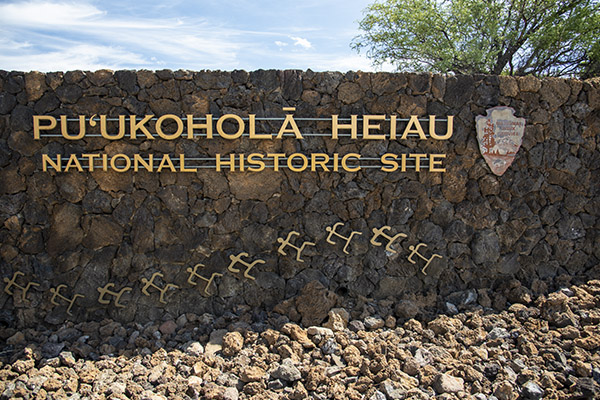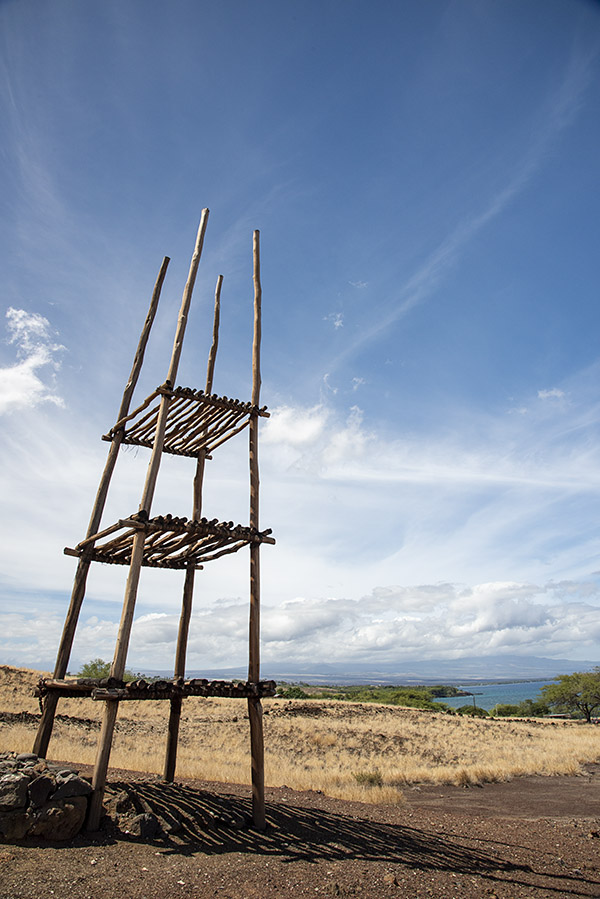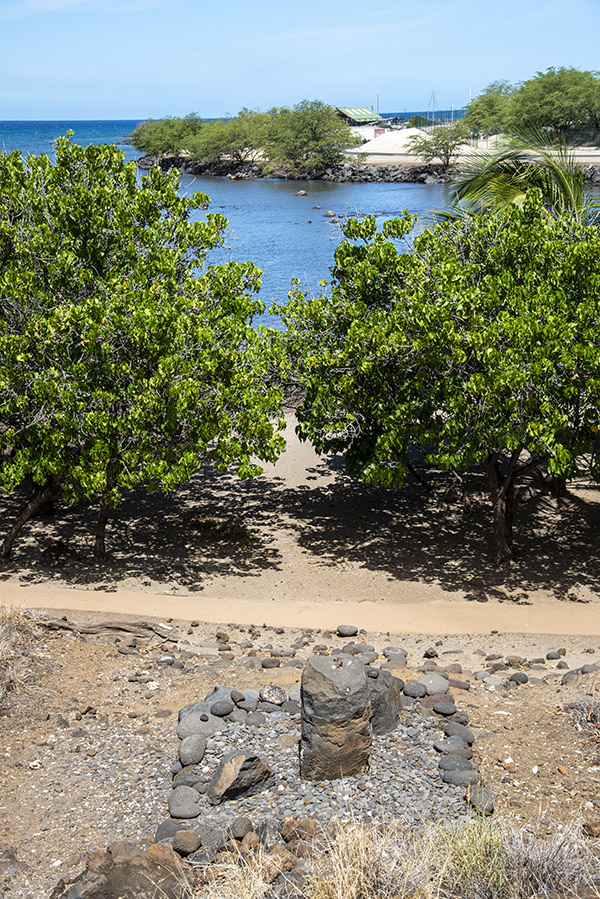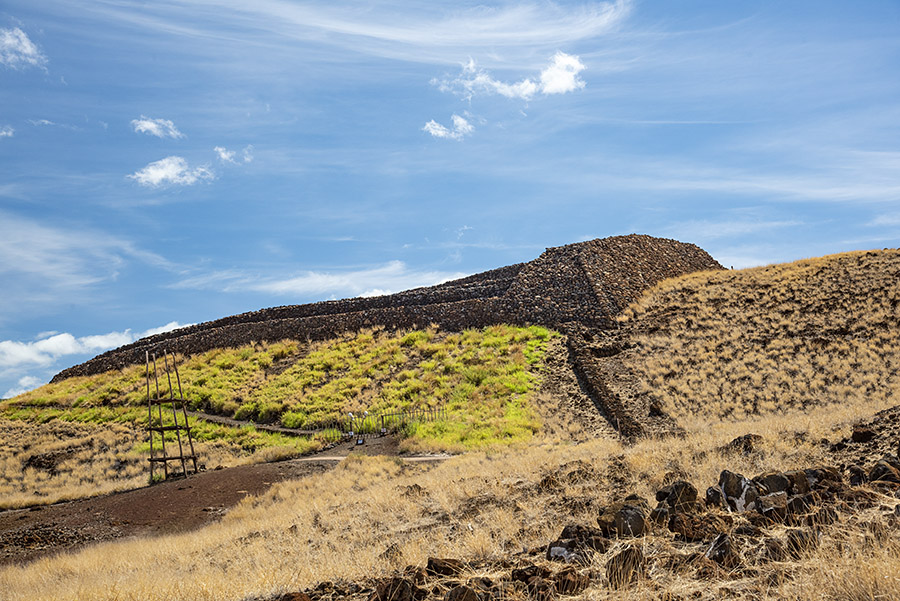I was in Hawaii when I wrote this blog, and we were on the Big Island (the actual island of Hawaii). It’s much less densely populated than Oahu and quite a bit less touristy. My daughter found a cool spot where the unification of the Hawaiian Islands originated, and that’s the Pu’ukohola Heiau National Historic Site.
King Kamehameha, the guy who was in charge of the island of Hawaii (which is one of eight Hawaiian islands) consulted with a Hawaiian priest about how to unify all eight islands. The priest was called a kahuna, and because King Kamehameha was the guy was asking the questions, I suppose the priest would have been the Big Kahuna. The Big Kahuna advised King Kamehameha to build a temple and sacrifice an ally there.
The Pu’ukohola Heiau temple is what you see in the photo at the top of this blog. It kind of looks like a whale, and you can see whales occasionally when you are in Hawaii. The temple was built in just one year with stones mined 27 miles away (and this occurred on an island where there were no horses or mules). King Kamehameha picked an ally for the sacrificial offering; it was his cousin Keōua, except they weren’t really allies. As the story was told to us, Keōua realized it was his destiny to be sacrified, so even though he knew the invitation was for a party that would not end well, he went. There are other aspects to the story that are more disturbing. Cousin Keōua mutilated himself before he arrived (he thought that would make him an imperfect sacrifice), but it didn’t work. Yep, King Kamehameha killed the guy. But evidently the Big Kahuna had been right. King Kamehameha succeeded in unifying the Hawaiian Islands.
Pu’ukohola Heiau is where all this happened, at the edge of the Pacific, and the area and the temple King Kamehameha built are now a National Historic Site.

The Pu’ukohola Heiau temple is what you see in the large photo at the top of this blog. It is impressive. There’s a sort of a tower in front of it, and that’s what you see below.

This Pacific Ocean inlet is at the base of the temple. There are contemporary signs warning that the waters are shark infested, and they advise people not to swim or even wade there. The sharks will attack, the signs warn.

In the old days, or so the story goes, the Hawaiians used to make human sacrifices in this bay. The rock you see below is where the chief would sit to watch the sharks attack whoever was being sacrificed.

Surprisingly, there’s a public beach less than a quarter mile away along the same shoreline. Needless to say, I stayed out of the water.
Another thing we saw there (and all over the Big Island) were mongooses. Mongooses are an invasive species in Hawaii (they came from India), and they have become an apex predator as they have no natural enemies on the Big Island. We didn’t know they were mongooses initially. We thought they were rats, but the tails were way too big and thick for rats. They behaved liked squirrels and they are about the same size. The mongooses scurried about and would come right up to you (they were not afraid to beg for food). I gave a mongoose something to eat, even though youi’re not supposed to. I didn’t want to disappoint an animal unafraid to go head-to-head with a cobra. I suppose you could introduce cobras to Hawaii to counter the mongoose invasion, but that would create other problems.
Never miss an ExNotes blog!
Don’t forget to help a couple of friends in need…hit those pop up ads!

